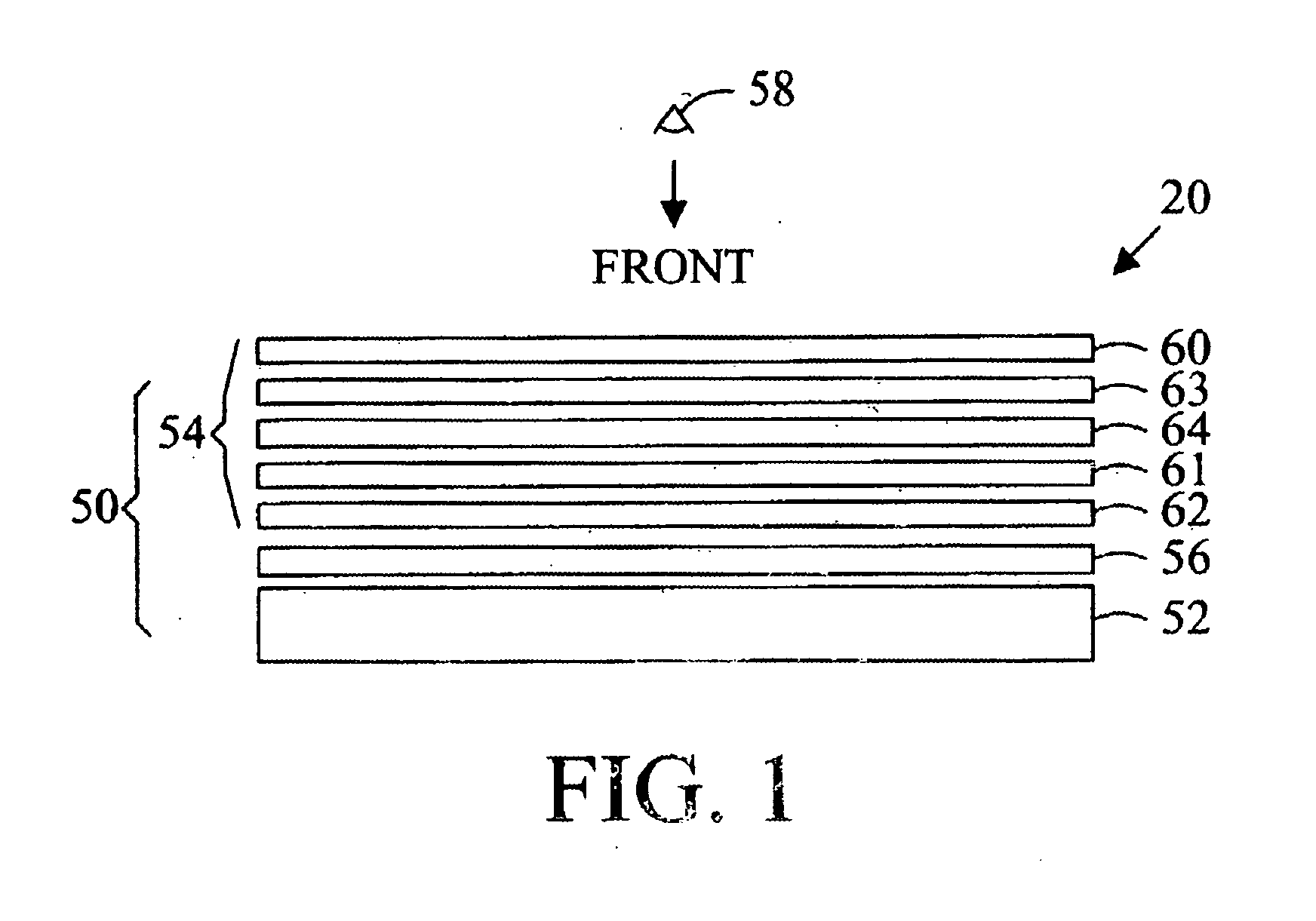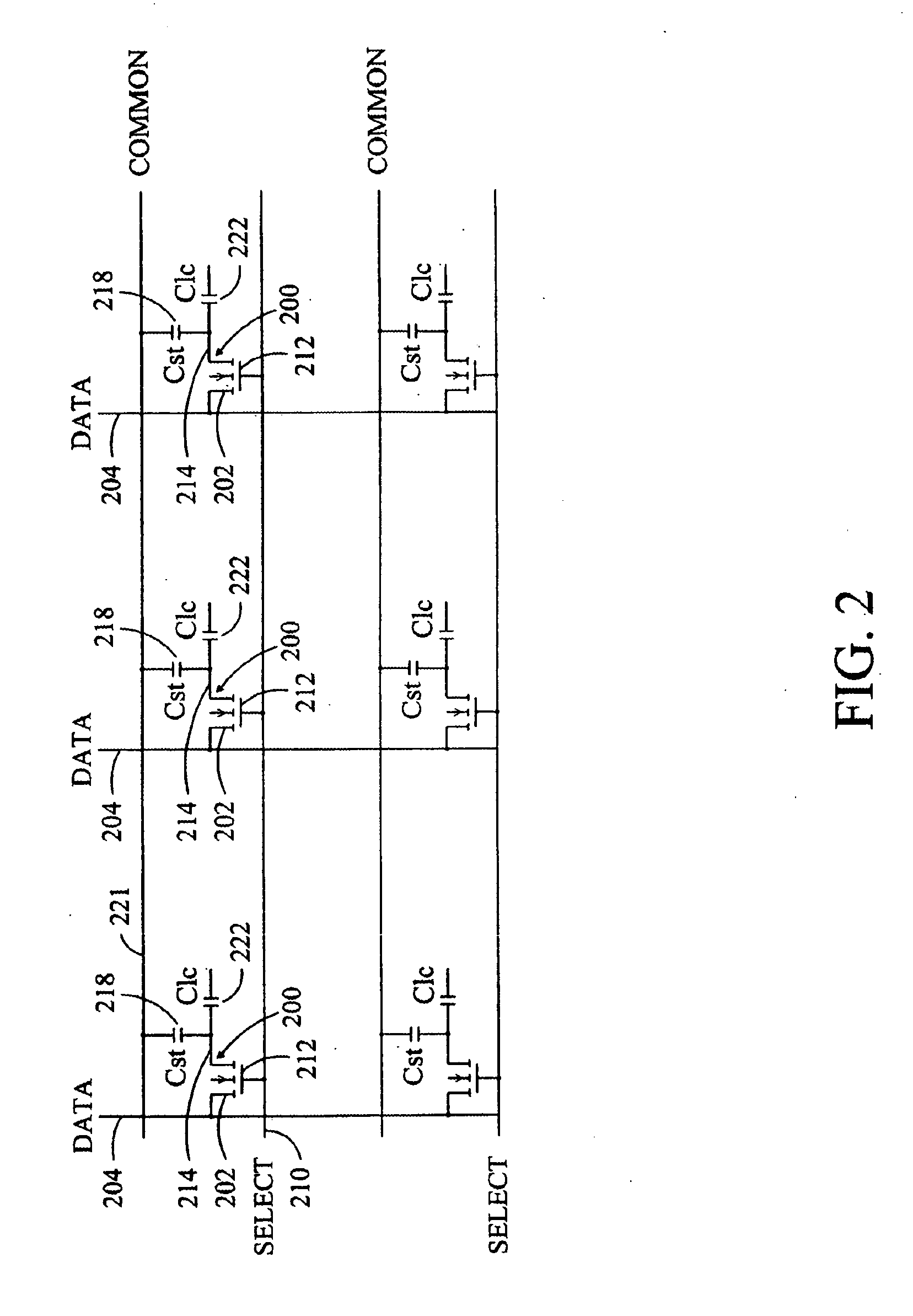Integrated light sensitive liquid crystal display
a liquid crystal display and light-sensitive technology, applied in the field of touch-sensitive displays, can solve the problems of increasing the complexity of display, and increasing the cost of display
- Summary
- Abstract
- Description
- Claims
- Application Information
AI Technical Summary
Problems solved by technology
Method used
Image
Examples
Embodiment Construction
[0050] Referring to FIG. 1, a liquid crystal display (LCD) 50 (indicated by a bracket) comprises generally, a backlight 52 and a light valve 54 (indicated by a bracket). Since liquid crystals do not emit light, most LCD panels are backlit with fluorescent tubes, xenon flat lamp, or arrays of light-emitting diodes (LEDs) that are built into the sides or back of the panel. To disperse the light and obtain a more uniform intensity over the surface of the display, light from the backlight 52 typically passes through a diffuser 56 before impinging on the light valve 54.
[0051] The transmittance of light from the backlight 52 to the eye of a viewer 58, observing an image displayed on the front of the panel, is controlled by the light valve 54. The light valve 54 normally includes a pair of polarizers 60 and 62 separated by a layer of liquid crystals 64 contained in a cell gap between glass or plastic plates, and the polarizers. Light from the backlight 52 impinging on the first polarizer ...
PUM
 Login to View More
Login to View More Abstract
Description
Claims
Application Information
 Login to View More
Login to View More - R&D
- Intellectual Property
- Life Sciences
- Materials
- Tech Scout
- Unparalleled Data Quality
- Higher Quality Content
- 60% Fewer Hallucinations
Browse by: Latest US Patents, China's latest patents, Technical Efficacy Thesaurus, Application Domain, Technology Topic, Popular Technical Reports.
© 2025 PatSnap. All rights reserved.Legal|Privacy policy|Modern Slavery Act Transparency Statement|Sitemap|About US| Contact US: help@patsnap.com



